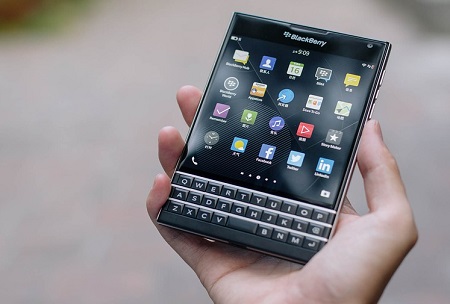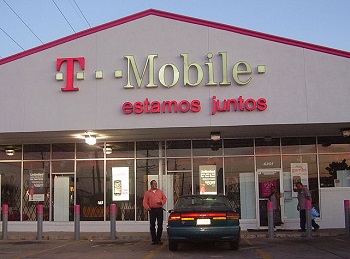On the heels of an announcement of an exit from the in-house hardware market, it unveiled a new device.
CEO John Chen recently announced that his company would no longer be manufacturing hardware, following up with an announcement that BlackBerry branded smartphones are on the way. The company has revealed to upcoming launch of a new physical keyboard phone release. This new mobile device will hit the shelves within the next six months.
This announcement was made by a top sales executive at BlackBerry within an interview with the BBC.
Alex Thurber, the senior vice president of global device sales, explained that he was aware that the company’s withdrawal from in-house hardware production would make headlines. He added that they were counting on the headlines to draw attention to the company. Then, he explained that BlackBerry branded smartphones would continue to be produced. They will be manufactured by third party suppliers.
 The next smartphone to wear the company’s logo will feature its distinctive physical keyboard. In a market where many devices look exceptionally similar, BlackBerry continually tries to stand out.
The next smartphone to wear the company’s logo will feature its distinctive physical keyboard. In a market where many devices look exceptionally similar, BlackBerry continually tries to stand out.
The next BlackBerry branded smartphones will have the physical keyboard many users love.
The company will rely on its partners to produce the new keyboarded smartphone. It had previously been leaked that BlackBerry was designing a couple of additional devices. When John Chen announced the end of the company’s hardware manufacturing, it looked like those smartphones were scrapped.
According to Thurber, Chen didn’t discuss those models during the previous announcement as final decisions had not yet been made. He didn’t know if they would be brought to market. Now it appears that the decisions have been made. “There will still be a keyboard-based BlackBerry device, designed and distributed within the next six months,” said Thurber.
He pointed out that the keyboards in the BlackBerry branded smartphones will set them apart from Samsung and Apple. Those industry leaders offer exclusively touch screen keyboards. “think there’s a demand for keyboard phones. As we’ve been showing mockups of what we’ve been working on, to our carrier and distributor partners, they are very excited about this,” explained Thurber.
During times of congestion, the phone data is given priority even for consumers paying for 4G tethering.
T-Mobile USA has revealed that it has started a practice of mobile hotspot throttling. This will occur at times when the network is heavily congested. The purpose is to give priority to smartphones and other mobile devices with data through the cellular network.
The company has been sending messages to advice customers about this recent change.
The website explained the mobile hotspot throttling by saying that “We just made your network better again. T-Mobile device data comes first. We’ve primed the network for on-device use.” The website went on to say “So now when there’s congestion, you may notice higher speeds for data on your T-Mobile devices versus Smartphone Mobile Hotspot (tethering).”
 When the network becomes heavily congested, the service will automatically give priority to on-device data. This, the company admits, will bring about slower tethering speeds. Those slower speeds will occur even for people who have paid for them.
When the network becomes heavily congested, the service will automatically give priority to on-device data. This, the company admits, will bring about slower tethering speeds. Those slower speeds will occur even for people who have paid for them.
The mobile hotspot throttling should keep smartphones moving fast but laptops will have a more sluggish connection.
The change has been made at the same time that T-Mobile has been working to encourage customers to switch to somewhat unlimited plans. They want people to use plans labeled as unlimited but that actually do have certain limitations applied to them. They are hoping the switch will occur to send people away from the data buckets.
The newly launched T-Mobile One plan does not have any coverage fees or data caps. However, it does have a throttle that reduces video to 1.5 Mbps. This makes it possible to enjoy about 480p resolution but not more. Moreover, when customers consume over 26 GB in a month, their data usage is throttled, as well when connecting to cell towers.
The standard plan through T-Mobile One has a monthly fee of $70. While those customers can connect to hotspots, it is throttled to 512 kbps no matter the time of day or congestion. This is considerably slower than the un-throttled 4G LTE mobile tethering download speeds from the company. Those typically run between 3 and 25 Mbps, but can run as high as 90 Mbps. T-Mobile One customers can pay an additional monthly $25 for faster hotspot use and high-def video, but even in that package is subject to the mobile hotspot throttling at congested times.
 The next smartphone to wear the company’s logo will feature its distinctive physical keyboard. In a market where many devices look exceptionally similar, BlackBerry continually tries to stand out.
The next smartphone to wear the company’s logo will feature its distinctive physical keyboard. In a market where many devices look exceptionally similar, BlackBerry continually tries to stand out.
 When the network becomes heavily congested, the service will automatically give priority to on-device data. This, the company admits, will bring about slower tethering speeds. Those slower speeds will occur even for people who have paid for them.
When the network becomes heavily congested, the service will automatically give priority to on-device data. This, the company admits, will bring about slower tethering speeds. Those slower speeds will occur even for people who have paid for them.